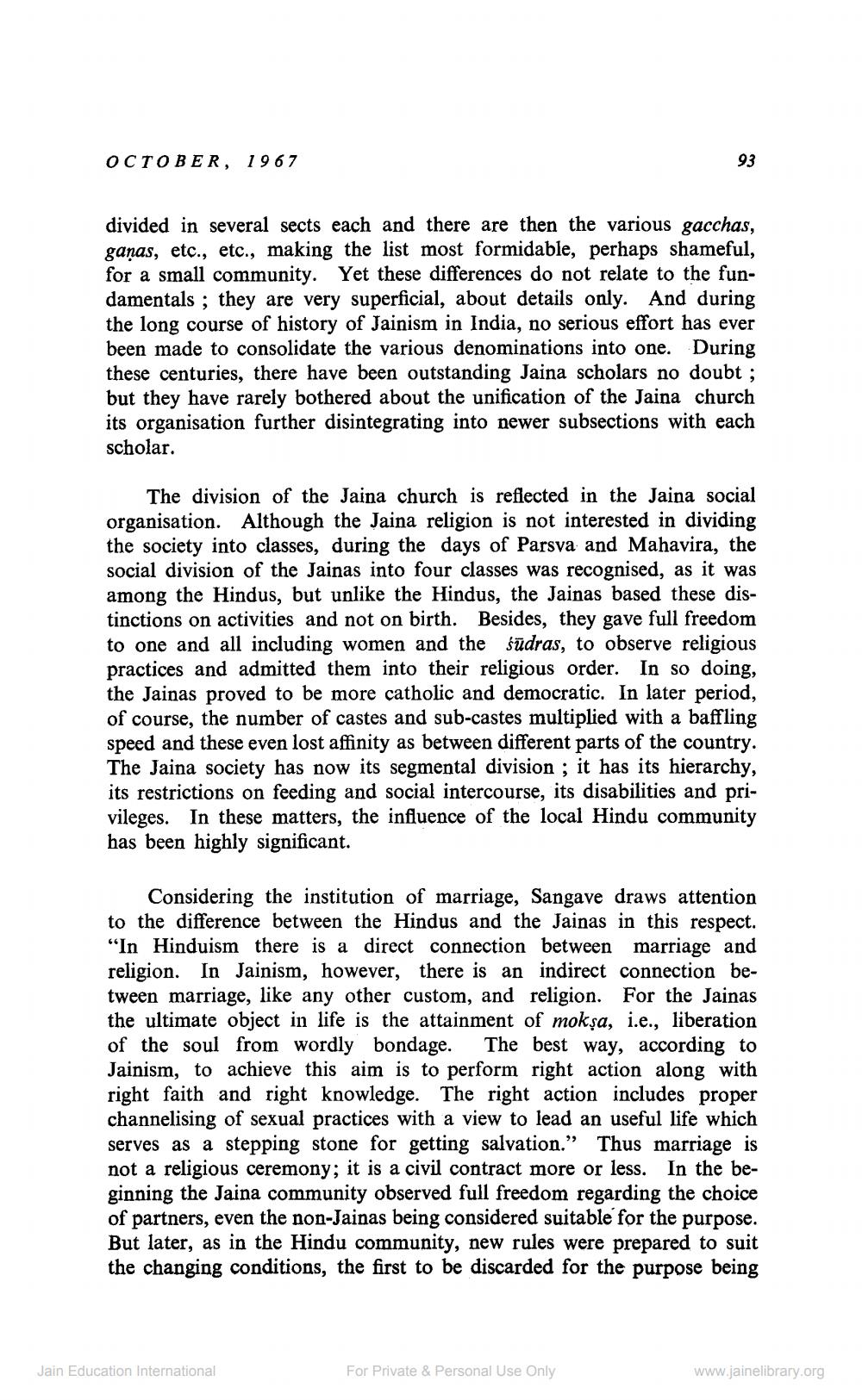________________
OCTOBER, 1967
divided in several sects each and there are then the various gacchas, ganas, etc., etc., making the list most formidable, perhaps shameful, for a small community. Yet these differences do not relate to the fundamentals; they are very superficial, about details only. And during the long course of history of Jainism in India, no serious effort has ever been made to consolidate the various denominations into one. During these centuries, there have been outstanding Jaina scholars no doubt; but they have rarely bothered about the unification of the Jaina church its organisation further disintegrating into newer subsections with each scholar.
93
The division of the Jaina church is reflected in the Jaina social organisation. Although the Jaina religion is not interested in dividing the society into classes, during the days of Parsva and Mahavira, the social division of the Jainas into four classes was recognised, as it was among the Hindus, but unlike the Hindus, the Jainas based these distinctions on activities and not on birth. Besides, they gave full freedom to one and all including women and the sudras, to observe religious practices and admitted them into their religious order. In so doing, the Jainas proved to be more catholic and democratic. In later period, of course, the number of castes and sub-castes multiplied with a baffling speed and these even lost affinity as between different parts of the country. The Jaina society has now its segmental division; it has its hierarchy, its restrictions on feeding and social intercourse, its disabilities and privileges. In these matters, the influence of the local Hindu community has been highly significant.
Considering the institution of marriage, Sangave draws attention to the difference between the Hindus and the Jainas in this respect. "In Hinduism there is a direct connection between marriage and religion. In Jainism, however, there is an indirect connection between marriage, like any other custom, and religion. For the Jainas the ultimate object in life is the attainment of mokşa, i.e., liberation of the soul from wordly bondage. The best way, according to Jainism, to achieve this aim is to perform right action along with right faith and right knowledge. The right action includes proper channelising of sexual practices with a view to lead an useful life which serves as a stepping stone for getting salvation." Thus marriage is not a religious ceremony; it is a civil contract more or less. In the beginning the Jaina community observed full freedom regarding the choice of partners, even the non-Jainas being considered suitable for the purpose. But later, as in the Hindu community, new rules were prepared to suit the changing conditions, the first to be discarded for the purpose being
Jain Education International
For Private & Personal Use Only
www.jainelibrary.org




